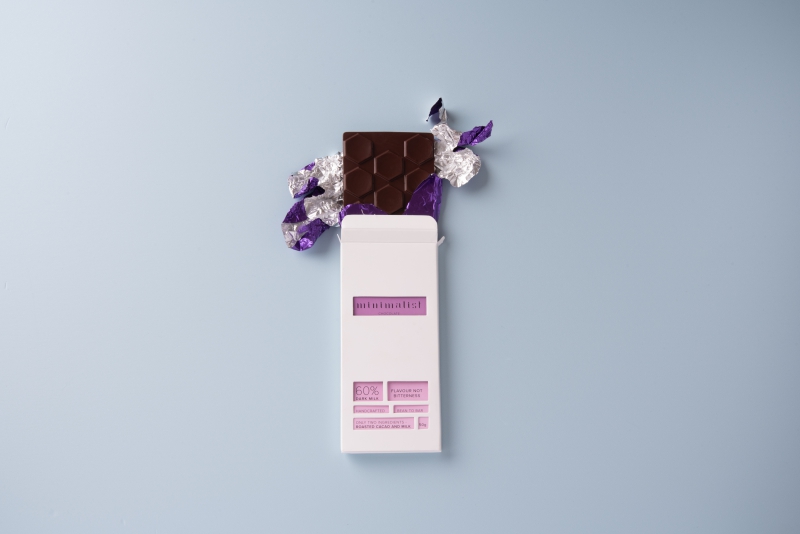I don't know if any of you are also MasterChef fans, but there was recently an episode on chocolate and it got me thinking about this great article we published in Issue 35. I learned so much!
Who among you can honestly say that you don’t love chocolate? That there has never been a moment when you were astounded by the melting of smooth and creamy chocolate on your tongue? We were recently given an education on some of the finer points of chocolate-making and starting a new brand by one the trailblazers of the coffee world, David Donde. Delve deeper with us into a world we very much take for granted, picking our favourites excitedly from the sweet aisle and never wondering how they got there. Fear not! We’re not looking to lessen your enjoyment of this divine substance, rather we hope to inspire you to support small, local chocolatiers as we have always done in coffee. Always be curious!
Words by David Donde
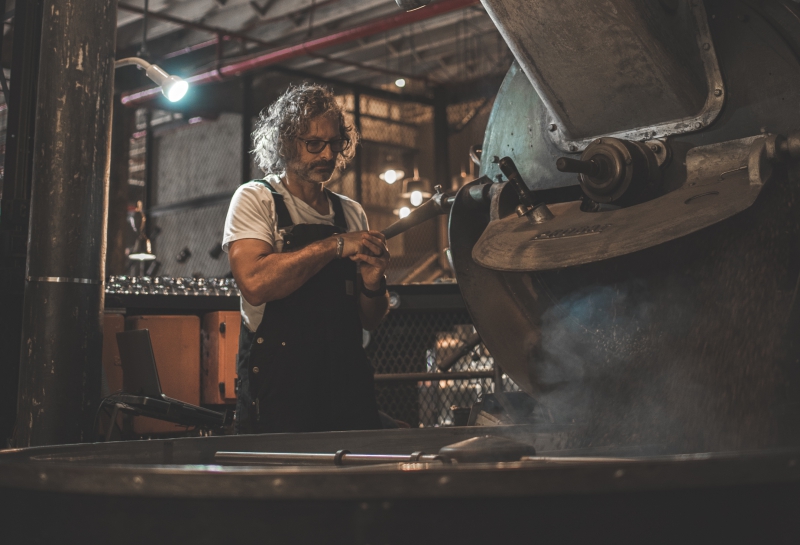
Antoine de Saint-Exupéry, the writer of The Little Prince once said “Perfection is achieved, not when there is nothing more to add, but when there is nothing left to take away.”
This is the essence of minimalism. We live in an age where our overindulgent consumerism is literally destroying us. Whether we will die from our bad habits or from habitat destruction is a dystopian race to the bottom. Is there another way? I believe there is. Joy isn’t about more. Joy is about flavour and comfort. About being, about the now. If indulging in joy now has a future price, your joy is diminished. A path that embraces both ethics and flavour, that is what I am after.
I have been called a sugar nazi to my face on more than one occasion. Coffee without sugar was a point to be made. In a time before we understood the Sugar Pandemic affecting our health and the health of our children. Talking of pandemics, our beloved cafe, Truth Coffee here in Cape Town, South Africa, has been severely affected by shutdowns and loss of tourism. Our people have suffered. Making payroll every month has been a challenge. For months on end distributing ALL of our gross profits to the team equally, to keep their families fed was a choice we made willingly. While neighbourhood cafes have been kept buoyant through these times, a central city attraction like ours has had few ups and many huge downs.
So what does an entrepreneur do? Looks at the challenges and seeks opportunity. Yes, we could have pivoted and become a grocery store, but that isn’t our purpose. It wouldn’t have fed our philosophy, and without philosophy, there is no purpose, and a business without purpose may as well not exist, in my opinion. So we navel-gaze, and we look at what drives us, at what we excel in. Roasting, learning, making flavour(s) and who are we? What is the team? Who is the team? And we realise, we have an unexplored opportunity: chocolate.
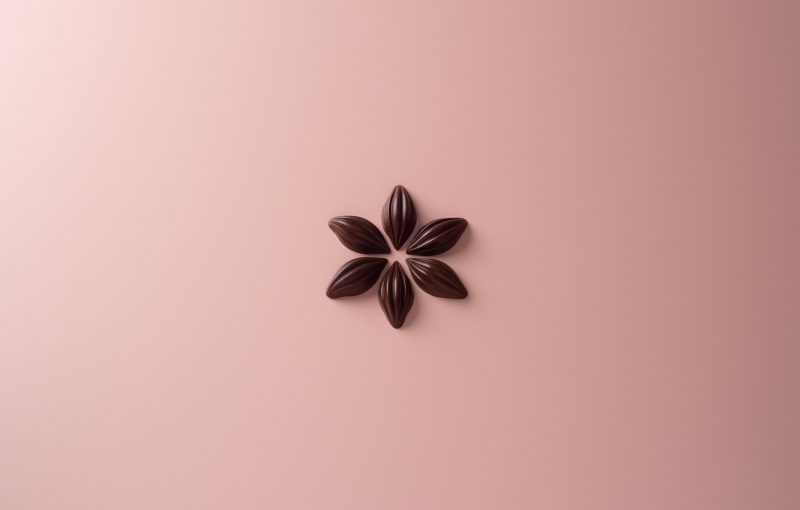
A confession from a self-confessed foodie: I have always hated dark chocolate. There it is, out in public now. Use it against me at will. I want that joy of an illicit easter egg that also echoes the joy of foodie indulgence. What Tony’s Chocolonely* has done for ethics, and To’ak Chocolate** has done for concept, I want both of those in one world. So the question we asked was, could we do for chocolate, what we have done for coffee: flavour not bitterness. Is chocolate naturally dry and bitter, or is that the fault of sloppy processing?
We chatted to the experts and, in a few words, we are told not to bother. “Just do what everyone else does, buy a good enough wholesale chocolate and melt it and call it yours. Making Bean-to-Bar chocolate well is too hard.” Challenge accepted.
The old adage I was once told by an Australian Barista, still holds true, she said, “You can’t polish a turd.” Basically, start with good green coffee, or in our case, cacao (the chocolate equivalent of green coffee beans). Finding great coffee is simple (this century anyway), you find a great matchmaker that you can trust and you order samples based on flavour notes, varietal, farm and origin. We tried to apply the same process with cacao. It did not go well.
“What flavour notes do the various cacao beans you offer have?” you politely ask. “Excuse me?” is the reply.
Ok, deep breath, we can do this. “Varietals?” you ask. “Huh?” is the heady response.
Ok, let’s try another tack. “Any great origins available?” “Yes,” they exuberantly offer, “want some Madagascar? Madagascar is the best you know.”
Well, from our experience, it isn’t. We tried a lot of cacao. A lot. There are some amazing origins, but the best we have tested so far is from São Tomé and Príncipe. And we bought a load of it. It is a tiny island country off the West Coast of Africa almost directly on the equator.
On a personal note, the story of São Tomé shocked me to my core. In 1470, the Portuguese decided to grow sugar cane on this island off of the west coast of Africa. So what did they do? They took 2000 Jewish kids under the age of 8 as slaves. I did not know this modern legacy of slavery of my people, but we are making this chocolate in memory of them.
There are dozens of cacao varietals. And the heritage stuff is where it is at. Sadly the modern hybrids are a disaster! They may yield many times more per hectare and are way less work to maintain, but in my opinion, they taste like they belong in the dump. Unlike coffee, if a heritage tree is pollinated by a hybrid, then funky, big, high yield pods ensue, which is not a good thing. Cross-pollination is a real problem. But we do love the Forasteros for the record. A faster growing and more vigorous varietal than other common types, the Forastero cacao tree is widely used by the chocolate industry, producing 80% of the world’s cacao bean supply. While many claim that Forastero is inferior in quality and taste to its siblings, others argue that the flavour of the Forastero is actually quite delectable and that it is only less valued because of its abundance. And of course, finding heritage Forastero is key. The lack of bad chocolate varietals on the island is my number one reason for using cacao from São Tomé. But ultimately it comes down to terroir, which impacts on flavour. In testing and tasting, it was the hands-down clear winner by the proverbial country mile!
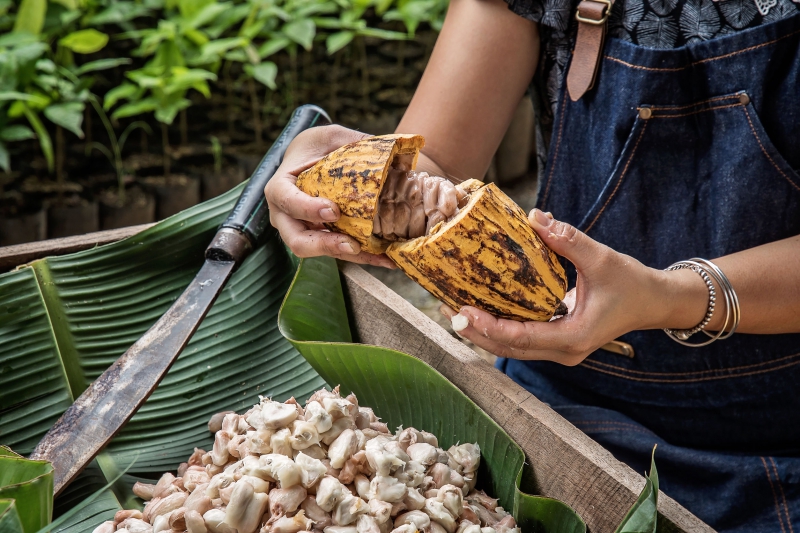
Farming is hard. Always. Cacao farming is no different. There are many different styles of farmers, from large estates to small-holder co-operatives. As with coffee, the models are mixed, with farmers, co-ops and collectives finding ways to process the cacao beans once the pods are picked from the trees. Processing is vital and makes a huge difference in what styles of fermentation are adopted, as with coffee. We of course will always favour smallholders and wild grown, over mass-produced, except for the worthy exceptions! We have not found the exception in cacao yet, but in coffee, a great example is Daterra, a large coffee estate, or agribusiness if you will, yet it behaves like a family business, and produces quality that belies its huge size.
Chocolate is stuck in the equivalent of second-wave coffee (maybe not even that). We see the opportunity to follow our Coffee journey and make an impact on the world. We can get through to “Third Wave” chocolate quickly with our experience through coffee. Not by additives and junk, but by treating it as food should be treated. Buying amazing agricultural products and understanding flavour development. Making use of the Maillard process to allow the joy in the beans to shine through without resorting to horrible additives to mask hideous flavours that shouldn’t have found their way into the product in the first place. I am happy to report that we have our first two-ingredient chocolate, which contains only Cacao and Milk, and it is creamy, sweet and delicious.
There are many parallels between coffee and chocolate, from agriculture to varietals to heritage. Processing to the point of roasting is very similar indeed. However, from then on chocolate is different.
A word of warning, what seems a simple journey of making chocolate did take a highly skilled team about a year to pull off. Learning to roast cacao was the same and we use our coffee roaster, but the stages and rates of change in the process are utterly different. As with any artisan roasting, the bean needs to speak. Forcing a roasting process on a different terroir, varietal or farm doesn’t work. It is, however the age-old story, maximise Maillard (caramelisation of flavour) while minimising pyrolysis (burning, the leading cause of bitterness). I need to stress how hard it is to do this right, both in coffee and chocolate. Then once you get the roasting right, the true learning curve on chocolate making begins. Learning to shell without losing good material, conching and melanging, and learning the various crystalline structures that can happen in chocolate (nearly ten and most of them ruin the chocolate!). Cacao gets its “shell” stripped after roasting, and then conched or melanged, which means ground to a paste, then to a liquid, usually with sugar (we leave the sugar out in our special process). What is conching you ask? A conching machine provides heat and motion via a series of paddles or rotors which keep the chocolate molten and always moving over a heated base for the desired time. The time varies depending on the result the chocolate maker is looking for. Conching not only breaks down the particulate matter of cacao into bits so tiny your palate cannot detect them it also enrobes every little morsel in a perfect coating of cocoa butter. It then gets tempered, which means we alter the crystalline structure through heating and cooling. This process stabilises the chocolate so you can manipulate it and mould into shapes and cools as the chocolate we know and love. It also gives the chocolate a smooth and glossy finish.
The process is a long one from bean to bar and the more we know, the better choices we can make. And so, in taking an opportunity in the midst of chaos, we are down to two ingredients, Cacao and Milk, and we get our first taste of the beginnings of perfection, enough to bring a little hope to a prince?
*Tony’s Chocolonely is a fair trade chocolate company based out of the Netherlands, founded by an investigative reporter who was shocked to discover that slavery still exists to this day in the cacao industry in West Africa (where 70% of all cacao is grown). According to their website, the name came about because “he tried to discuss this with several chocolate companies. When they declined, Teun decided to make his own slave free chocolate bars. He felt very lonely in his battle against slavery in the chocolate industry, so he called his company 'Tony's Chocolonely’.”
**To’ak Chocolate was born from a rainforest conservation project that co-founder Jerry Toth started in Ecuador in 2007. Through his nonprofit foundation Third Millennium Alliance (TMA), he helped create the Jama-Coaque Ecological Reserve, which currently protects over 560 hectares (1,400 acres) of tropical forest along the coastal mountain range. It was here that he began cultivating cacao trees and making chocolate by hand in a thatched bamboo house secluded in the middle of the forest. To’ak’s mission is to transform the way that the world experiences dark chocolate, elevating its making and tasting onto the level of vintage wine and aged whisky.
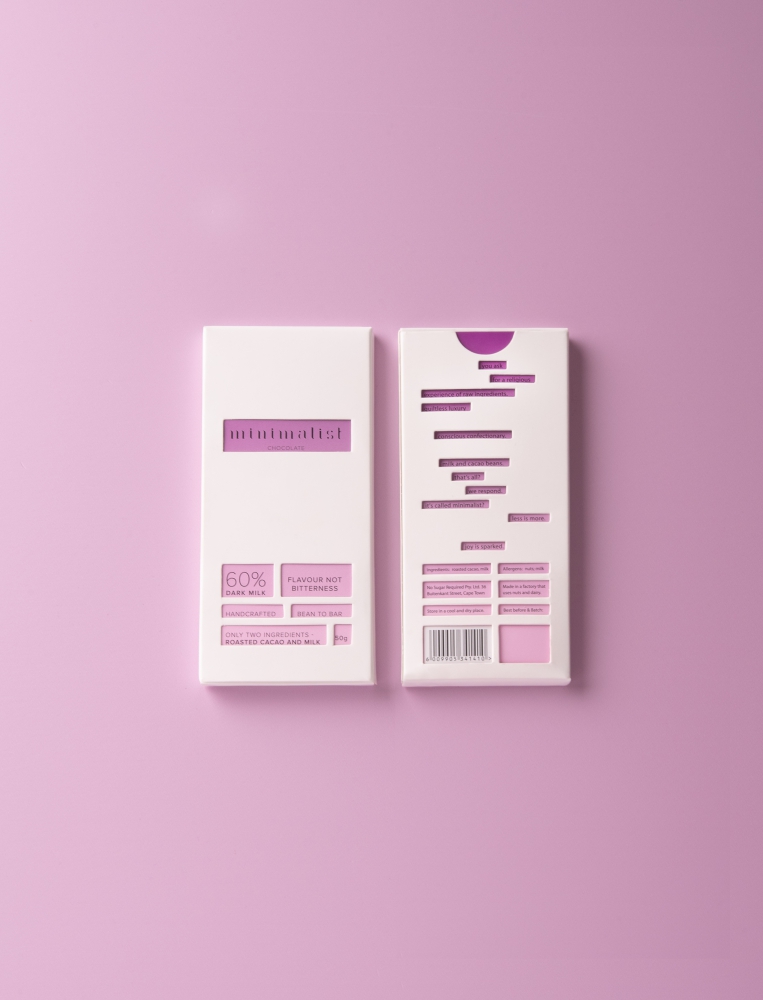
We have built it! That was a long intro to our new venture, Minimalist Chocolate
As I write this our first batch is completely sold out! I wanted to create childhood chocolate joy. While I can’t clearly explain that, I know it when I get it. And we nailed it. We are still learning. The funky fruit notes in some chocolate is something worth exploring for sure, but our main objective for now, is to get to chocolatey chocolate, if that makes sense?
Minimalist’s distinctive packaging features cut-outs that demonstrate that sometimes cutting out the unnecessary can yield beautiful results in the slab. Minimalist’s classic chocolate bars are crafted from just cacao and milk, making for an after-taste and creamy texture that are seriously more-ish. We also have a second chocolate in final development which should have launched by the time you read this. This one is for you, the vegans and lactose intolerant, made with 60% Cacao and OatM*lk in collaboration with our sister project, oaternative.com. Our extended product selection also offers something for the sweet tooth. Bon Bons come in five irresistible flavours: hazelnut, salted caramel, Truth coffee, dulce de leche and Christmas cake, for some sugared decadence at its finest. Chocolate gift boxes are available in batches of 5 bon-bons.
We are presently raising capital to take the micro-brand global, protecting the welfare of our team well into the future. Myself and Minimalist co-founder Ken Walton have identified experts and those who share their passion to bring the project to life, and the team, from roasters and chocolatiers to chefs and cocktail bartenders, they’ve all become a part of the delicious result.
We are doing this project out of love for what we do, love for our people, and of course, love for chocolate. The intention is to sell this chocolate globally, and we hope that all of our friends in coffee are prepared to stock this chocolate in their cafes?
Chocolate without crap in it. That tastes good? That has a long lingering and pleasant aftertaste? You decide.
